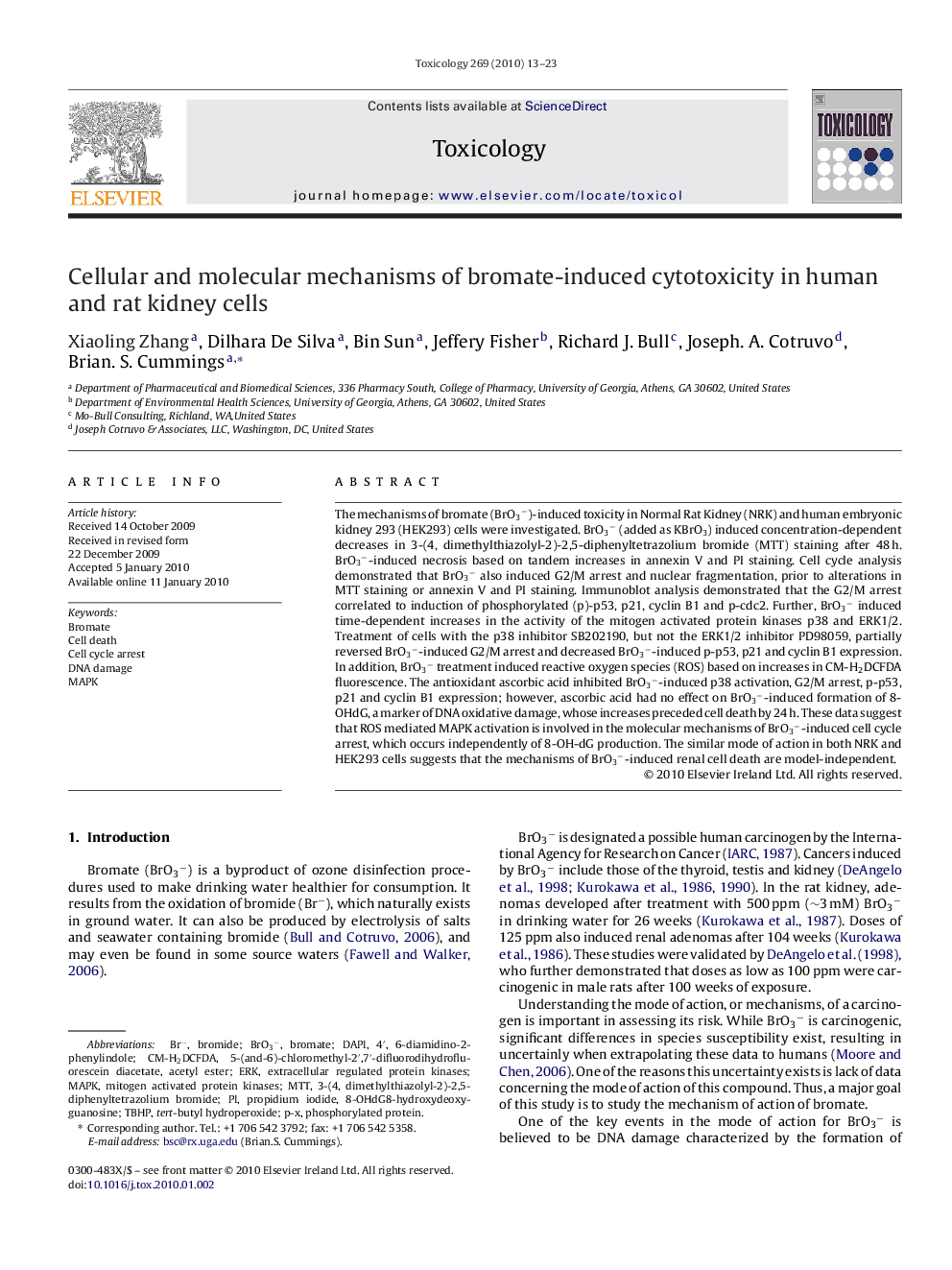| Article ID | Journal | Published Year | Pages | File Type |
|---|---|---|---|---|
| 2596599 | Toxicology | 2010 | 11 Pages |
Abstract
The mechanisms of bromate (BrO3â)-induced toxicity in Normal Rat Kidney (NRK) and human embryonic kidney 293 (HEK293) cells were investigated. BrO3â (added as KBrO3) induced concentration-dependent decreases in 3-(4, dimethylthiazolyl-2)-2,5-diphenyltetrazolium bromide (MTT) staining after 48Â h. BrO3â-induced necrosis based on tandem increases in annexin V and PI staining. Cell cycle analysis demonstrated that BrO3â also induced G2/M arrest and nuclear fragmentation, prior to alterations in MTT staining or annexin V and PI staining. Immunoblot analysis demonstrated that the G2/M arrest correlated to induction of phosphorylated (p)-p53, p21, cyclin B1 and p-cdc2. Further, BrO3â induced time-dependent increases in the activity of the mitogen activated protein kinases p38 and ERK1/2. Treatment of cells with the p38 inhibitor SB202190, but not the ERK1/2 inhibitor PD98059, partially reversed BrO3â-induced G2/M arrest and decreased BrO3â-induced p-p53, p21 and cyclin B1 expression. In addition, BrO3â treatment induced reactive oxygen species (ROS) based on increases in CM-H2DCFDA fluorescence. The antioxidant ascorbic acid inhibited BrO3â-induced p38 activation, G2/M arrest, p-p53, p21 and cyclin B1 expression; however, ascorbic acid had no effect on BrO3â-induced formation of 8-OHdG, a marker of DNA oxidative damage, whose increases preceded cell death by 24Â h. These data suggest that ROS mediated MAPK activation is involved in the molecular mechanisms of BrO3â-induced cell cycle arrest, which occurs independently of 8-OH-dG production. The similar mode of action in both NRK and HEK293 cells suggests that the mechanisms of BrO3â-induced renal cell death are model-independent.
Keywords
Related Topics
Life Sciences
Environmental Science
Health, Toxicology and Mutagenesis
Authors
Xiaoling Zhang, Dilhara De Silva, Bin Sun, Jeffery Fisher, Richard J. Bull, Joseph. A. Cotruvo, Brian. S. Cummings,
